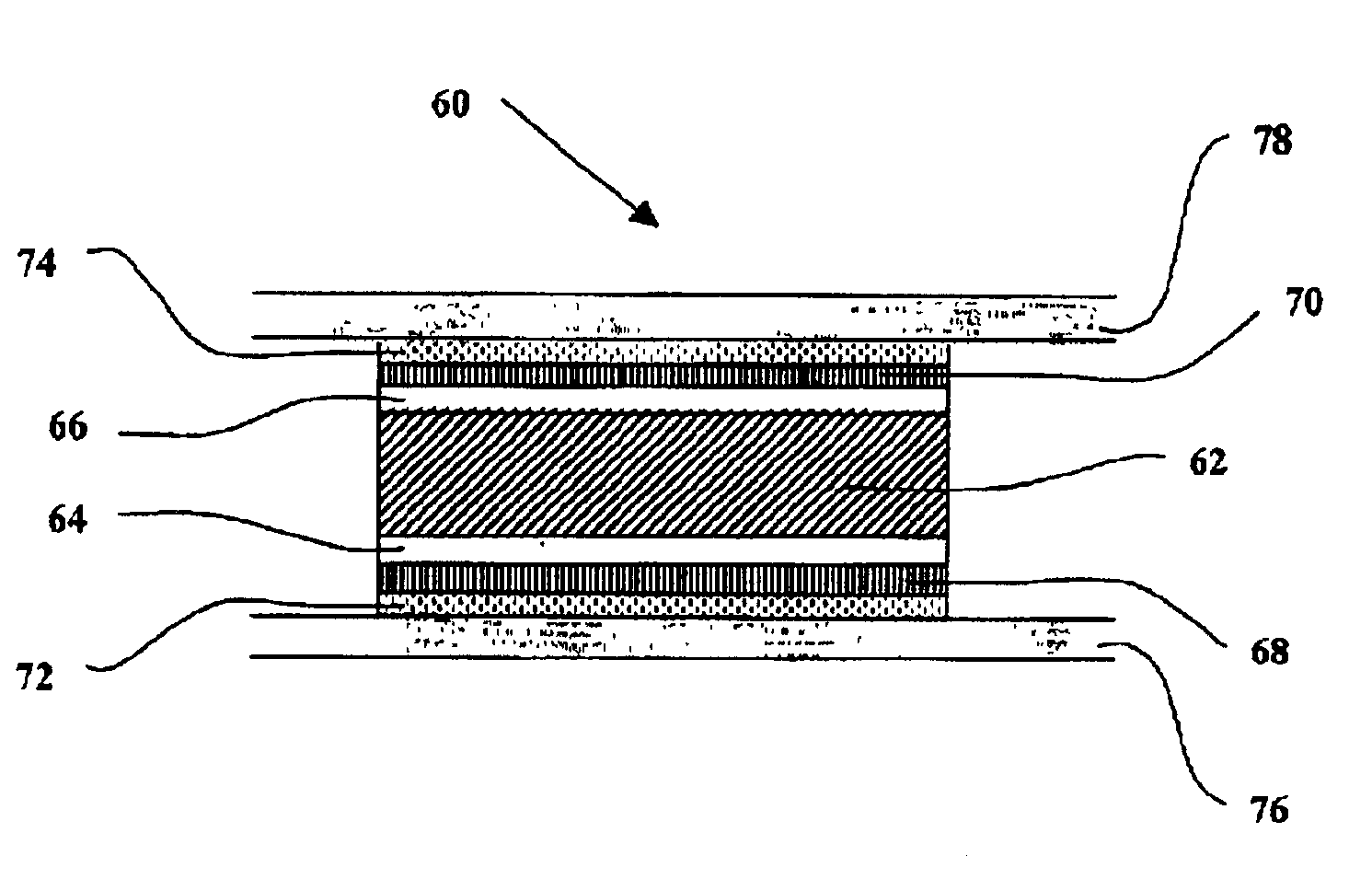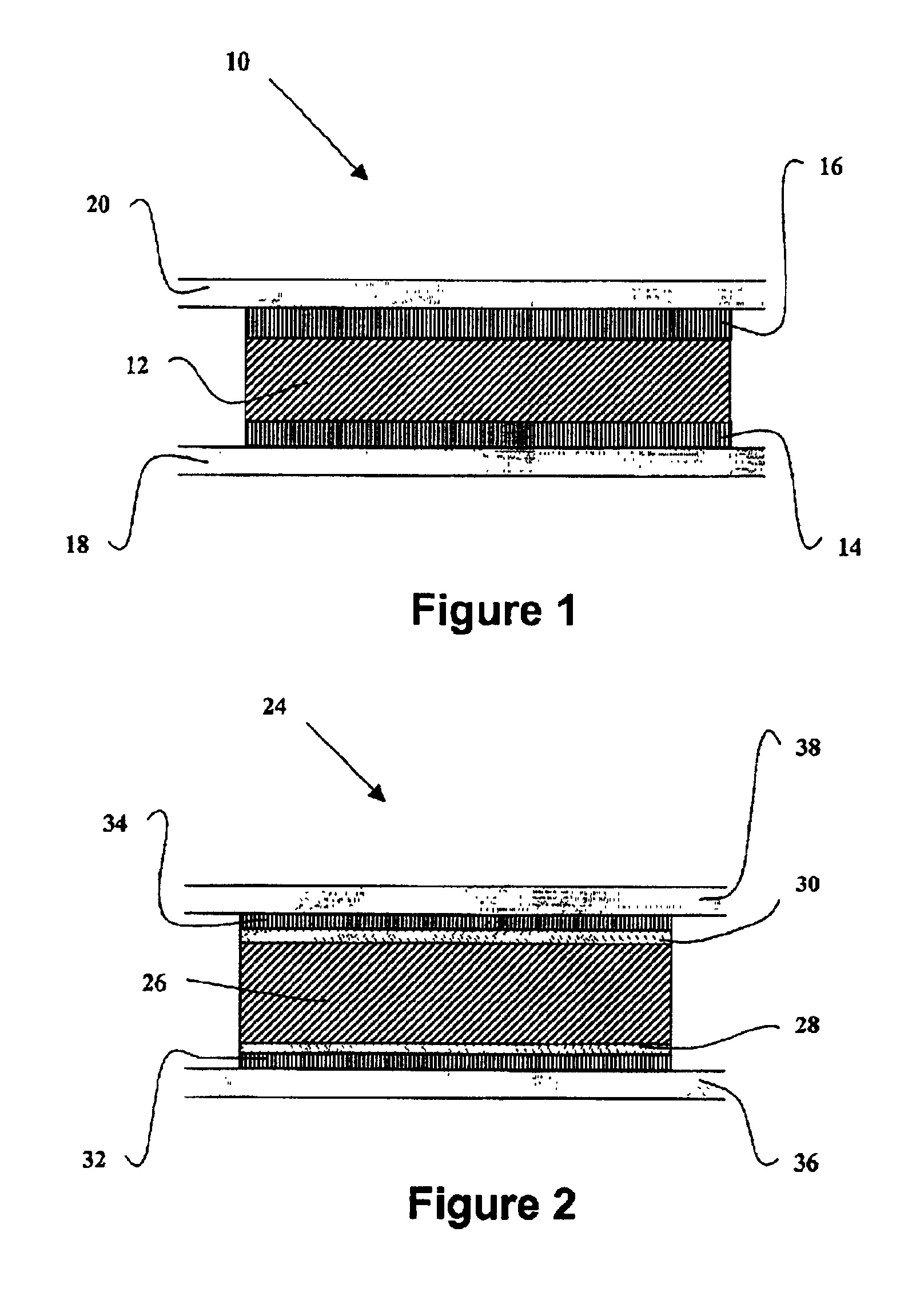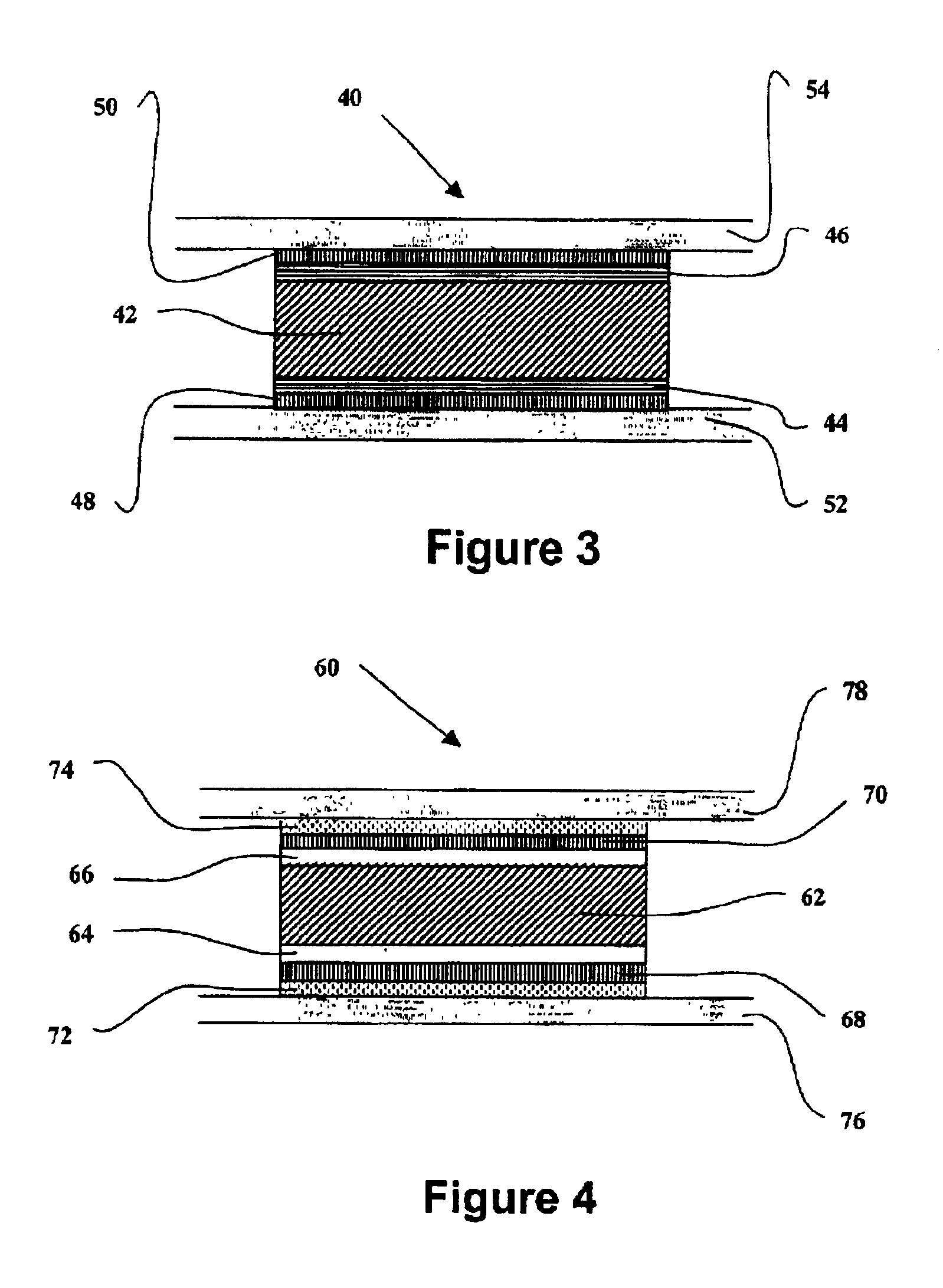Barrier structures for integration of high K oxides with Cu and Al electrodes
a barrier structure and high k oxide technology, applied in the field of new materials, can solve the problems of limited availability for use in semiconductor production environments, difficult etching or polishing of materials, and high cost of noble metal alloys and oxides, and achieve excellent conductivity and high melting point
- Summary
- Abstract
- Description
- Claims
- Application Information
AI Technical Summary
Benefits of technology
Problems solved by technology
Method used
Image
Examples
example 1
[0081]Amorphous BiTaO4 films are deposited onto two types of substrates: 100 nm Ir on 500 SiO2 on (100) Si and 10 nm TiAlN on 100 nm Ir on 500 nm SiO2 on (100) Si. In both cases the film thickness was determined by calibrated X-ray Fluorescence (XRF) using a mixture of the ideal densities for Bi2O3 and Ta2O5 to calculate thickness. Top electrodes of 100 nm Pt were deposited by electron beam evaporation through a shadow mask to define pads between 10−4 to 10−3 cm2 in area. The capacitance was measured using a HP4192A meter. The capacitance per unit area is shown in FIG. 5 as a function of dielectric film thickness for both electrode structures. Surprisingly, equivalent capacitance values for the same thickness of dielectric film were observed, indicating that there are no capacitive interlayers formed between the dielectric and the TiAlN interlayer.
PUM
| Property | Measurement | Unit |
|---|---|---|
| thickness | aaaaa | aaaaa |
| thickness | aaaaa | aaaaa |
| dielectric constant | aaaaa | aaaaa |
Abstract
Description
Claims
Application Information
 Login to View More
Login to View More - R&D
- Intellectual Property
- Life Sciences
- Materials
- Tech Scout
- Unparalleled Data Quality
- Higher Quality Content
- 60% Fewer Hallucinations
Browse by: Latest US Patents, China's latest patents, Technical Efficacy Thesaurus, Application Domain, Technology Topic, Popular Technical Reports.
© 2025 PatSnap. All rights reserved.Legal|Privacy policy|Modern Slavery Act Transparency Statement|Sitemap|About US| Contact US: help@patsnap.com



